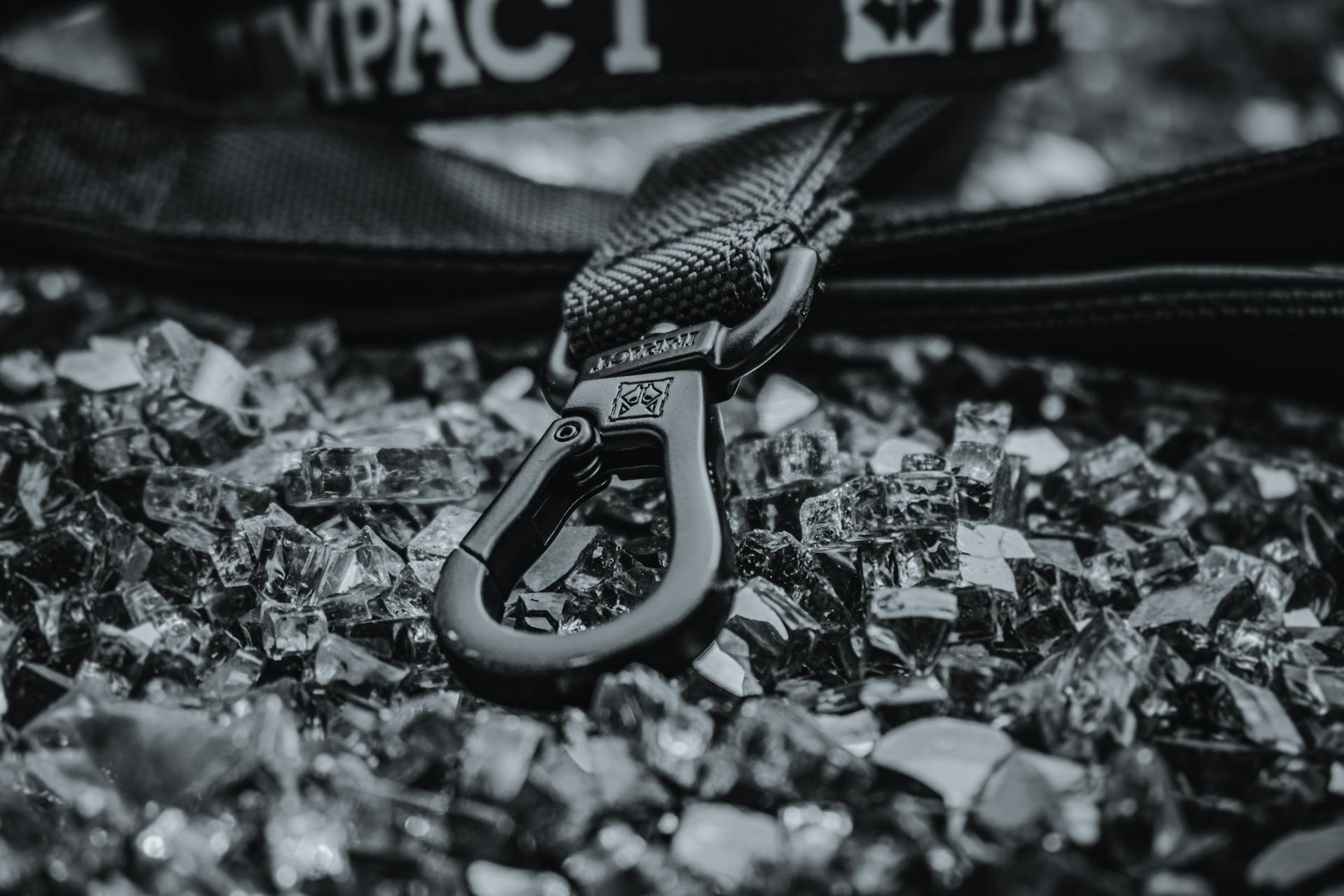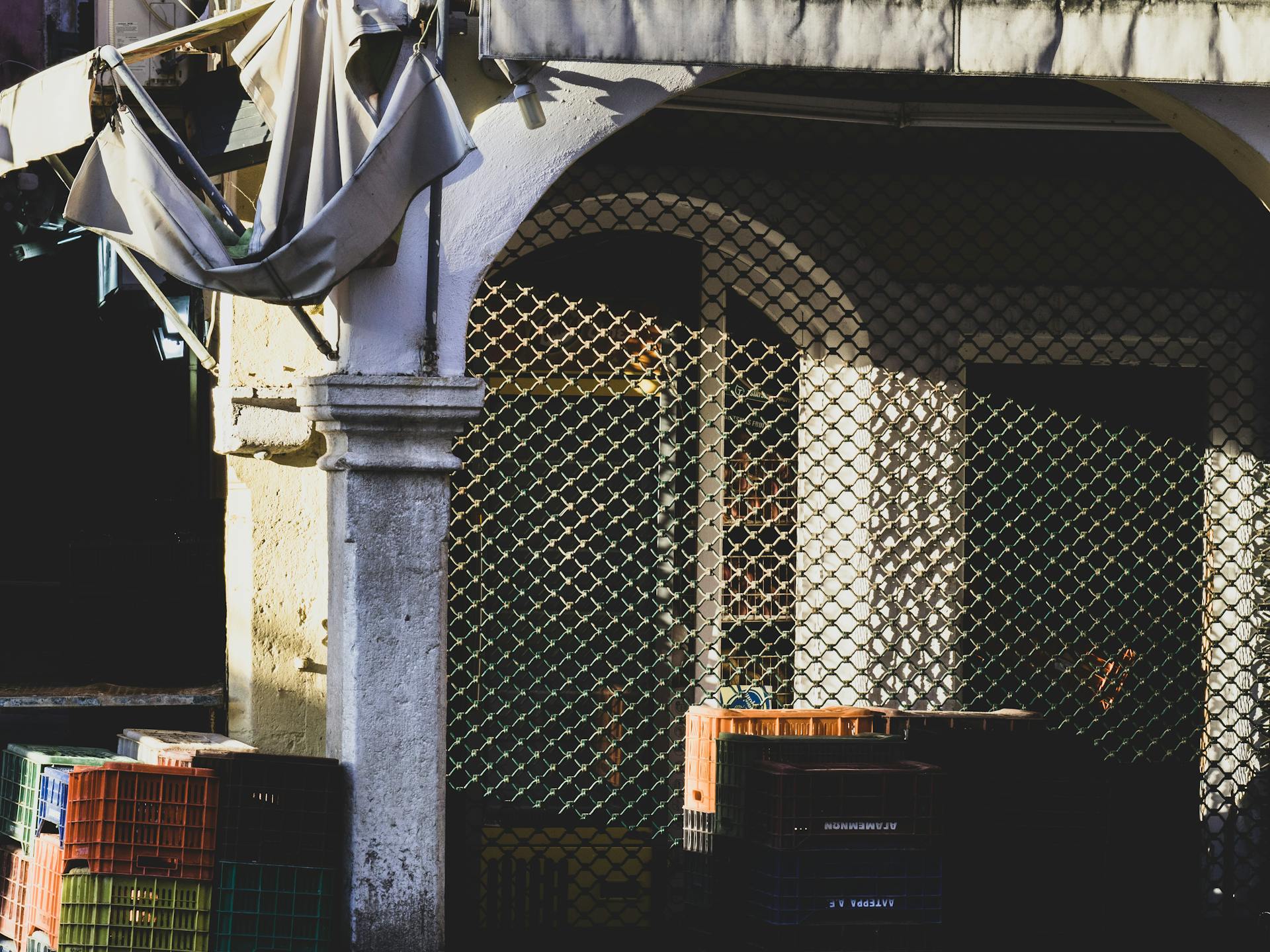
Crate training a dog while working outside the home requires a solid plan and some creative problem-solving. The first step is to establish a consistent routine, just like you would if you were home all day. This means setting a regular schedule for feeding, exercise, and playtime.
To ensure your dog's needs are met while you're away, consider investing in an automated feeder that can be programmed to dispense your dog's meals at set times. This will help prevent overeating and reduce the risk of digestive issues.
A crate can be a safe and comfortable space for your dog to relax in when you're not home, but it's essential to introduce it gradually to prevent anxiety and stress. Start by placing the crate in a high-traffic area and encouraging your dog to enter it voluntarily with treats and praise.
With patience and consistency, your dog will learn to associate the crate with a sense of safety and security.
Preparation
To crate train a dog while at work, you need to start by preparing the right crate for your dog. You want to get one that's durable, comfortable, and flexible with whatever training you're doing.
A good crate is essential for crate training. For dogs that prefer to sleep in the dark, kennel or airline-style dog crates are a good choice, while wire dog crates work best for other dogs.
Dog Supplies
When choosing a crate for your dog, consider the type and size carefully. A crate that's too big can derail the potty-training process, so it's essential to get one that's just right.
You'll want to choose between hard plastic airline-style crates or wire crates. Wire crates are more versatile, allowing for door placement customization and interior size adjustments with a divider.
A crate should be large enough for your dog to stand up, turn around, and lie down comfortably, but not so big that it provides too much space.
If this caught your attention, see: Big Dog Training
For puppies, it's a good idea to purchase a crate that will accommodate their adult size, and use a divider to give them more space as they grow.
A simple crate mat, like the Frisco Micro Terry Dog Crate Mat, is a good choice for puppies still acclimating to the crate.
Treats, like Wellness Soft Puppy Bites Lamb & Salmon Recipe Grain-Free Dog Treats, are essential for introducing your pup to the crate and reinforcing good behavior.
Busy toys, such as the KONG Classic or West Paw Zogoflex Small Tux Tough Treat Dispensing Dog Chew Toy, can help keep high-energy dogs occupied and happy in the crate.
Here's a list of the basic supplies you'll need for crate training:
- Bedding (a simple crate mat is a good choice)
- Treats (small savory treats are best for crate introduction)
- Toys (busy toys that can be stuffed with treats are ideal)
Be Patient
Crate training is a process that takes time and patience. You don't want to rush it, as this can lead to frustration for both you and your dog. According to Flayton, you should prepare yourself for at least six months of crate training. Dogs aren't linear learners, so it's essential to stay calm and consistent in your methodology.
It's normal for dogs to experience ups and downs during crate training. If you're feeling frustrated, take a step back and remember that success will come with time and patience. Flayton advises that even when it feels like you're banging your head against a wall, your dog will eventually look for the reward, and you'll have the opportunity to reward them.
To help you stay on track, here are some key milestones to expect during the crate training process:
Remember, every dog is different, and crate training may take longer for some than others. Be patient, and don't hesitate to seek professional help if you need it. With time and consistency, you and your dog will succeed in crate training.
Training Basics
As you prepare to leave your dog crated while you're at work, it's essential to understand the basics of crate training. A 4-month-old puppy can hold it for about four hours, which means you should plan for a mid-day break if you'll be leaving your dog crated during the work day.
For more insights, see: Dog Training Day Care
To avoid accidents, give your dog a potty break before putting them in the crate, and take them outside immediately after letting them out. This is especially important for puppies whose "hold time" is still developing.
If your dog is reluctant to eat inside the crate, try placing their bowls next to the crate for a few meals, then just inside of it, and finally, at the back of the crate. Feeding their meals in the crate with the door open can help make it a positive spot.
Remember, crate training is not about punishment, but about creating a safe and comfortable space for your dog. If your dog whines in the crate for the first few minutes after a potty trip, it's likely just settling in.
Here are some general guidelines for crating your dog:
By following these basic principles, you can set your dog up for crate-training success and ensure a happy and safe experience for both you and your furry friend.
Training Process
Training your dog to be comfortable in a crate while you're at work requires some planning and patience. To speed up the crate training process, it's essential to give your dog a potty break before putting them in the crate, and take them outside immediately after letting them out.
Don't crate your dog for too long, as this can lead to accidents inside the crate. Puppies, in particular, have a limited "hold time" that's roughly their age in months translated to hours. For example, a 4-month-old puppy can hold it for about four hours.
Feeding your dog's meals in their crate with the door open can make it a positive spot. This can help your dog associate the crate with good things, like food and relaxation. You can start by placing the bowls next to the crate, then just inside, and finally at the back of the crate.
If your dog whines in the crate, it's not always a sign that they need to go out. It can take a few minutes for them to settle in, so try to ignore the whining at first. Remember, the goal is to make the crate a comfortable and enjoyable space for your dog.
Suggestion: It's Your Choice Dog Training
Here's a rough guide to help you plan your dog's crate time:
By following these tips, you can help your dog feel more comfortable and secure in their crate while you're at work. Just remember to plan for regular potty breaks and to make the crate a positive space for your dog.
Sources
- https://www.akc.org/expert-advice/training/how-to-crate-train-your-dog-in-9-easy-steps/
- https://be.chewy.com/how-to-crate-train-a-puppy-a-step-by-step-guide-from-an-expert/
- https://www.playtimepaws.com/crate-training-how-why/
- http://www.sadiesrulesk9training.com/blog-posts/2019/6/29/how-to-crate-train-your-dog-and-why-you-should
- https://www.caninepetrescue.com/about-gsds/crate-training-your-dog/
Featured Images: pexels.com


